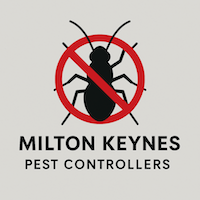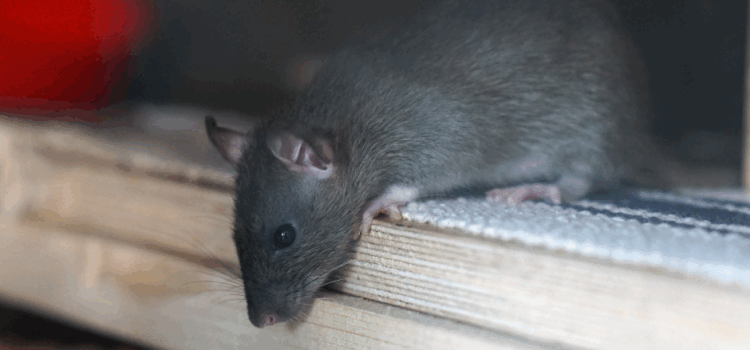Mice in Buckinghamshire: Species, Living Habits & Why They Enter Homes
From rural villages to busy towns, Buckinghamshire provides ideal conditions for several mouse species. Below we explain the most common mice you’ll see locally, their habits and breeding cycles, which ones invade homes and food premises, and what you can do to prevent or resolve an infestation. For fast help, visit Mice Control Buckinghamshire or request a quote with Milton Keynes Pest Controllers.
The Main Mouse Species in Buckinghamshire
1) House Mouse (Mus musculus domesticus) — Most Likely Indoors
- Where they live: Buildings of all types — homes, offices, restaurants, warehouses.
- Diet: Opportunistic omnivores; cereals, pet food, scraps.
- Breeding: Very rapid. Gestation ~19–21 days; typical litter 4–8; multiple litters per year.
- Behaviours: Active year-round, mostly nocturnal. Gnawing on packaging and wiring is common.
- Risk level: High for indoor contamination, electrical damage and food safety issues.
2) Wood/Field Mouse (Apodemus sylvaticus) — Common Around Gardens
- Where they live: Hedgerows, gardens, sheds, garages, lofts near green spaces.
- Diet: Seeds, berries, insects; will take bird food and pet food.
- Breeding: Spring–autumn peak; several litters per year.
- Behaviours: Agile climbers and jumpers; stash food in cavities.
- Risk level: Medium. Often wander indoors in colder months or when food is plentiful close to properties.
3) Yellow-Necked Mouse (Apodemus flavicollis) — Rural & Woodland
- Where they live: Mature woodland and rural outbuildings.
- Diet: Seeds, nuts, invertebrates.
- Breeding: Typically spring–late summer.
- Behaviours: Larger, strong gnawers; can colonise lofts/outbuildings near woods.
- Risk level: Low–medium for typical homes; higher for rural properties and farms.
4) Harvest Mouse (Micromys minutus) — Least Likely Indoors
- Where they live: Tall grasses, reedbeds, field margins; tiny woven nests above ground.
- Diet: Seeds and small insects.
- Risk level: Low for buildings; very rarely an indoor pest.
Which are most common locally? For indoor callouts across Buckinghamshire, the house mouse dominates, with wood/field mice a close second in semi-rural suburbs and garden-heavy areas.
Are Mouse Problems Increasing?
Rodent activity naturally fluctuates with season (colder weather drives mice indoors), food availability (bird feeders, waste handling), and urban development. Many residents report more sightings after cold snaps or building works nearby. Without current council-by-council data, it’s hard to quantify a county-wide rise; however, if you’ve noticed more activity recently, you’re not alone — and early action makes control quicker and cheaper.
Why Mice Enter Homes & Restaurants
- Warmth & Shelter: Lofts, boiler cupboards, under-floor voids, wall cavities.
- Food Sources: Unsealed dry goods, pet food bowls, bins, bird seed stores.
- Easy Access: Gaps at door thresholds, pipe penetrations, air bricks, broken vents, roofline defects.
Food businesses face higher risk due to consistent food/waste availability and warm back-of-house spaces. Environmental Health can require immediate actions where pest evidence is found, and poor pest control can negatively impact Food Hygiene Ratings.
Warning Signs to Watch For
- Small dark droppings along runways, behind kickboards, in cupboards.
- Gnaw marks on packaging, cables, pipe insulation and timber.
- Nocturnal scratching in ceilings, walls and under floors.
- Nest material (shredded paper/fabric/insulation) in quiet, warm voids.
- Smell — musky, ammonia-like odour in enclosed areas.
Prevention Checklist (Homes & Food Premises)
- Seal entry points: Mesh/steel wool around service pipes, intact air-brick covers, brush strips to doors.
- Food hygiene: Lidded bins; decant dry goods into sealed containers; clean spills daily.
- Storage discipline: Raise stock off floors; rotate and inspect regularly (use-by dates, gnawing).
- External hygiene: Keep yards tidy; manage vegetation; site bins away from doors.
- Monitoring: Regular inspections; use nontoxic monitors in commercial settings; staff training.
- Proofing & maintenance: Repair defects promptly; fit bristle strips; tidy cable penetrations.
- Professional support: Consider a contract for audits, reports and swift remedial treatment.
What About “Big Mouse Problems” in Restaurants?
Across the UK, Environmental Health Officers can issue improvement notices or temporary closures where active rodent evidence is found. While we won’t cite unverified local “stories,” the pattern is consistent: small lapses in proofing, storage, or waste handling can escalate fast. The most common triggers we see are:
- Back-door/threshold gaps and damaged door sweeps.
- Unprotected vents and pipe voids behind prep lines.
- Overfilled bins, spillage areas, and poor segregation of waste.
- Bird feeding near staff entrances (attracts rodents after hours).
For food premises, a preventative pest control contract with documented visits and corrective actions is often the difference between a smooth EHO audit and an emergency callout. Learn more on our Mice Control Buckinghamshire page.
Need Help Now?
If you’ve seen signs of mice — at home or in a business — we can help with fast, discreet control and long-term proofing. Request a Quote from Milton Keynes Pest Controllers and we’ll respond promptly.
FAQs – Mice in Buckinghamshire
1) Which mouse species is most likely to infest homes?
The house mouse is the primary indoor pest, with wood/field mice occasionally entering lofts, sheds and kitchens near gardens.
2) How fast can a small mouse problem escalate?
Very quickly — mice can breed every 3–4 weeks with litters of 4–8, so numbers rise fast without intervention.
3) Do mice carry diseases?
Yes. They can spread bacteria through droppings and urine and contaminate food preparation areas.
4) What are the most effective prevention steps?
Seal entry points, maintain food/waste hygiene, manage vegetation and storage, and schedule regular inspections.
5) Are ultrasonic devices enough?
They may deter activity temporarily but are not a standalone solution. Physical proofing and proper control are essential.
6) I run a restaurant. What documentation do I need?
Inspection reports, monitoring records, site plans and corrective actions — all included with our commercial contracts.
7) Do you cover the whole of Buckinghamshire?
Yes — we provide rapid appointments across the county. Request a quote to arrange a visit.

